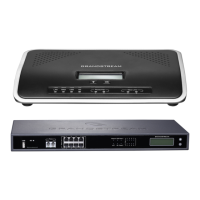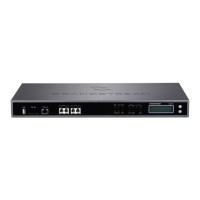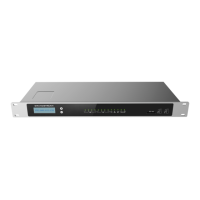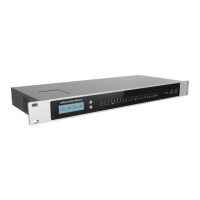How to start IP Ping on Grandstream Networks UCM6202 PBX?
- TThomas McdonaldJul 26, 2025
To start an IP Ping on your Grandstream Networks PBX, enter the target host's name or IP address, then press the "Start" button.
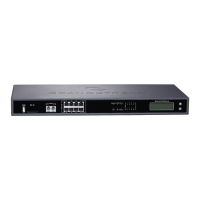
How to start IP Ping on Grandstream Networks UCM6202 PBX?
To start an IP Ping on your Grandstream Networks PBX, enter the target host's name or IP address, then press the "Start" button.
How to run Traceroute on Grandstream Networks PBX?
To perform a Traceroute on your Grandstream Networks PBX, enter the target host's name or IP address and then press the "Start" button.
How to use Ethernet Capture on Grandstream Networks PBX?
To use the Ethernet Capture feature on your Grandstream Networks PBX: * To save capture files to an SFTP server, check the corresponding box, ensuring data synchronization is configured beforehand. * To store captures locally on a USB or SD card, check the appropriate box to activate storage. * To filter traffic, enter specific types of traffic criteria (e.g., host, src, dst, net, proto). * To begin the capture, click "Start." * To end the capture, click "Stop." * To download the trace if stored locally, click the download button.
| Model | UCM6202 |
|---|---|
| Type | IP PBX |
| FXO Ports | 2 |
| FXS Ports | 2 |
| Maximum Concurrent Calls | 50 |
| VoIP Protocols | SIP |
| Fax over IP | T.38 |
| PoE | Yes |
| Voicemail | Yes |
| Web Interface | Yes |
| Flash Memory | 4 GB |
| Voice Codecs | G.711, G.723, G.726, G.729A, G.729AB, iLBC |
| Network Interfaces | 2 x 10/100/1000 Mbps Ethernet |
| Power Supply | 12V DC |
| Processor | Dual-core |
| Memory | 1 GB DDR3 |
| Operating Temperature | 0°C to 40°C |
| Humidity | 10% to 90% (non-condensing) |
Details new features and updates for firmware version 1.0.14.21.
Resumes technical specifications, protocols, codecs, and features for UCM6200 series.
Provides instructions for connecting UCM6200 models.
Outlines compliance with FCC/CE and other safety standards.
Provides instructions on accessing and using the Web GUI.
Guides users through the initial basic configuration using a setup wizard.
Describes the eight main sections available in the Web GUI.
Provides steps to make the first call using the UCM6200 and SIP endpoint phone.
Covers configurations for system-wide network parameters.
Details firewall security configurations to prevent malicious attacks.
Explains the embedded LDAP server for managing corporate phonebooks.
Covers time configuration, including auto time updating and manual settings.
Details the default Zero Config feature and its auto provisioning methods.
Covers global policy and global templates for configuring SIP end devices.
Explains how to create, delete, and manage device configurations.
Provides steps to manually create a new SIP user.
Details configuration parameters for creating a new SIP extension.
Lists and explains analog trunk configuration parameters.
Details configuration for SIP and IAX trunks.
Discusses steps to configure and manage outbound rules.
Details how to create, edit, view, invite, manage, and delete conference bridges.
Details how to create, edit, view, and delete IVR configurations.
Details global setup and management of voicemail for extensions.
Describes ring group configuration with different ring strategies.
Explains the configuration of call queues with static or dynamic agents.
Details settings for T.30/T.38 Fax and Fax Pass-through.
Displays the status of active calls and allows real-time monitoring.
Lists all feature codes and describes how to use call features.
Details FXS and FXO port settings and signaling preference.
Monitors the status of Trunks, Extensions, Queues, etc.
Provides information on hardware, software, network, and storage.
Provides access to Call Detail Records for call analysis.
Covers creating and managing administrator and extension user accounts.
Describes how to upgrade the UCM6200 firmware remotely or locally.
Covers backing up and restoring UCM6200 configurations.
Provides options for resetting and cleaning system data.


